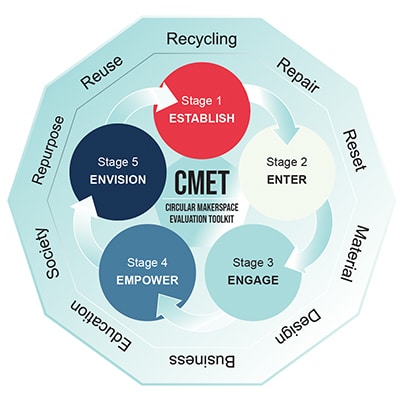IDSA publishes a selection of peer-reviewed academic education papers each year. These are collected during a community-wide open call period when design educators and practitioners submit materials for review by a group of judges serving on IDSA’s Academic Jury. The program also helps provide content for the annual Education Symposium, where some authors are invited to present their work from the stage to a live audience. To view the full Education Papers jury please visit meet the jury page.
A Detailed Analysis of the Effects of Creative Burnout Among Design Students and Professionals
Creative burnout is a major inhibitor for creative individuals that is often overlooked or dismissed. The purpose of this study is to better understand creative burnout and its effects on creative individuals, gaining insight on how to prevent, cope,
Author: Kayla Roles
Company / School: Kansas State University
- 2022
- Paper Type: Student Research
- Education Symposium Theme: (Re)Connect
Mapping User Needs Throughout the Design Process
There is a common misconception that human needs exist primarily independent of designed products, services, and systems available in the built environment. A more nuanced examination of need, however, reveals that sometimes the opposite is true – solutions do
Author: James Rudolph
Company / School: University of Notre Dame
- 2022
- Paper Type: Academic Research
- Education Symposium Theme: (Re)Connect
How to Integrate Elements of Social Movements Into the Design Process
This visual paper aims to understand and address the lack of equity and inclusion in the current design process, and the disconnect it has caused between designers’ personal values and beliefs and the work they do for their jobs.
Author: Yudan (Danielle) Chen
Company / School: Huge, LLC
- 2021
- Paper Type: Design Letter
- Education Symposium Theme: Breaking Down Barriers
CIRCULAR MAKERSPACE EVALUATION TOOLKIT (CMET)
The practices of making and learning by doing remain a cornerstone of education today. In the context of carbon neutrality, we extend a typical “making” stage into “sustainable making” and “meaningful making” on colleges campuses for the procurement process,
Author: Sheng-Hung Lee
Company / School: Massachusetts Institute of Technology
- 2021
- Paper Type: Academic Research
- Education Symposium Theme: Breaking Down Barriers
Engaging Veterans in the ID Process and Introduction Into Positive Technologies
Digital 3D modeling and fabrication tools are used in myriad sectors from education to industry, enabling ideation, prototyping, and even production. Given their wide application, can Computer Aided Design (CAD) and Computer Aided Manufacturing (CAM) be employed to support
Author: Efecem Kutuk
Company / School: Michael Graves College, Kean University
- 2021
- Education Symposium Theme: Design Exchange: Spanning the academic-practice divide
Reflecting on the Future of Design in Times of Crisis
The paper explores a series of important phenomena that have concurred to a global crisis, and their influence in pushing the design field to a crisis of its own. By acknowledging the scale and significance of humans’ influence on
Author: Fernando Carvalho
Company / School: School of Architecture, Design & The Built Environment, Nottingham Trent University, UK
- 2021
- Paper Type: Design Letter
- Education Symposium Theme: Breaking Down Barriers
Minorities’ Opportunity to Learn Design
Design-focused research has shown how diversity-related considerations are central to the design process; yet and still, racially minoritized individuals are largely absent from the field of professional design. Such existing disparities in racial representation are not due to a
Author: Cameron White, Dr. EunSook Kwon
- 2021
- Paper Type: Student Research
- Education Symposium Theme: Breaking Down Barriers
The Origin and Efficacy of a Multidisciplinary UX Design Major
The field of user experience design has grown to tremendous demand from industry over the past ten years. Education is usually slow to respond to the quick pace of emerging technology professions. However, with a multi-disciplinary planning team, and
Author: Jason A. Morris
- 2021
- Paper Type: Case Study
- Education Symposium Theme: Breaking Down Barriers
Author: Bryan Howell, Cameron Unson, Judith Westwood, Becky Fuller, Asa Jackson, Rebekah Rawlings, Michaela Hill
Company / School: Brigham Young University
- 2021
- Paper Type: Case Study
- Education Symposium Theme: Breaking Down Barriers, Symposium Test
Generation and Acquisition of Interdisciplinary Information
Growth through innovation is critical to Small and Medium-sized Enterprises (SMEs) and the use of patents is necessary to attract needed funding. SMEs’ use of the patent system is not as effective as larger companies. This research inquiry considers
Author: Robert Watters, Stephen Field, Michel Rod
Company / School: Carleton University
- 2021
- Paper Type: Student Research
- Education Symposium Theme: Breaking Down Barriers









